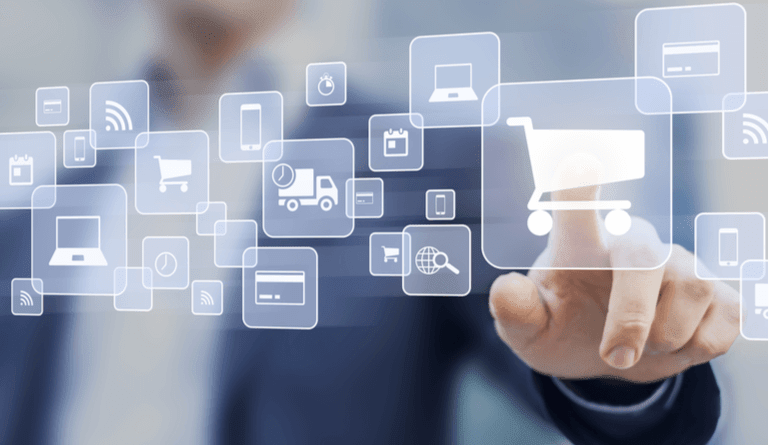The internet and the advance of mobile technology have both radically changed how businesses sell to, market to, and interact with customers. Both m-commerce and e-commerce have become daily parts of most people’s lives and have changed the nature of the customer relationship and expectations of a business.
M-commerce and e-commerce in business
While both m-commerce and e-commerce ultimately serve as a way to make customer’s lives easier, they differ in a few key ways.
E-commerce is the process of “electronic commerce”, such as online shopping and banking. This trend gained traction with modern consumers and the general public in the 1990s and has had a huge impact with brick and mortar businesses, either by creating too much competition for their brick and mortar establishment to stay competitive or by adding an additional revenue stream and creating a more successful business model.
M-commerce is a subsect of e-commerce. It offers many of the same benefits of e-commerce – a fast online commerce experience – with the added benefit of mobility and access on-the-go through devices like tablets and smartphones, which has become a huge part of the business of many companies as more and more people are conducting research or considering purchases from the convenience of their always accessible mobile devices.
Here are some of the key differences in m-commerce and e-commerce
1. Mobility
This is, of course, one of the main differentiators. While the relationship between e-commerce and e-commerce means they can bother to offer customers an online shopping or commerce experience, mobility the ultimate distinction that sets one apart from the other. M-commerce means that as long as there are an internet connection and an internet-ready device, consumers can shop, browse, pay, bank, purchase, ship, and more. While many people still choose to shop from a laptop or desktop, they also have the flexibility of using their mobile device and businesses that offer optimized experiences for both often find the most success.
2. Location tracking and location-based experiences
The RubyGarage blog notes, “m-commerce apps…can track and identify user locations with the help of GPS technology, Wi-Fi, and so on. As a result, m-commerce apps can provide location-specific content and personalized recommendations. For example, notifications can let local businesses offer personalized discounts targeting particular customers in a particular location.” This is a powerful tool for businesses who want to better sync up their online and in-store retail experiences.
3. Increased flexibility
While many e-commerce retailers offer additional payment options beyond standard credit cards, such as PayPal, mobile commerce creates even more payment flexibility. Popular mobile payment solutions like Apple Pay, PayPal One-Touch, and Amazon Pay give consumers more options to pay for their m-commerce based goods and services, and many can even be used as payment options for in-person retail transactions.
4. Security
While e-commerce offers security measures like two-factor authentication and multi-level authentication, m-commerce can also offer biometric authentication like scans, face ID, or fingerprints. These added security benefits are highly-valued in a world were consumers still feel their information is at risk and their privacy is on the line.
5. Additional data, additional marketing
An additional data point – a mobile device – means additional details and data. Even if your customer chooses to engage in both e-commerce at their desk and m-commerce on the go, you’ll receive two different sets of important data points from both types of transactions. What does this mean for your business? Essentially any additional contact with a customer – whether it’s a mobile app or a highway billboard – is an additional customer impression, which is good for marketing and brand growth. It also offers customers additional benefits like:
- Increased personalization: More data means you know more about your customer wants and needs. A more personalized relationship between your business and your consumer means they are more likely to turn to you for solutions because they’ll trust that you know their interests and are a valuable, knowledgeable solution.
- More marketing touchpoints: In addition to being another screen that offers a simple impression with your customer, you can customize your mobile marketing to make sure it’s creating the most value for your customer. Many businesses use mobile app-based push notifications to nudge customers and increase engagement.
- Increased loyalty and customer retention: Mobile commerce gives you a chance in boost customer engagement by offering an additional customer touchpoint that can come with exclusive benefits such as mobile-only discounts, special prices for registered customers, free shipping, and more.
M-commerce and e-commerce are both powerful ways to grow your customer revenue and have become necessary parts of many businesses across industries, from B2B and B2C and retail to service-based. Customers are more connected than ever and offering a mobile and e-commerce experience ensures that you have the best opportunity of connecting with the more of your target audience.





